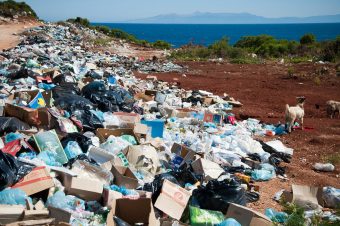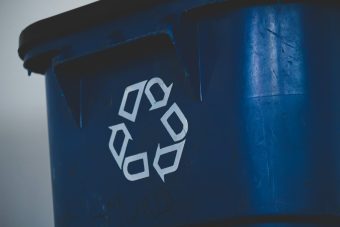
In its 2024 report „Global Waste Management Outlook – Beyond an Age of Waste: Turning Rubbish into a Resource“, the United Nations Environment Program (UNEP) has analysed the relationship that humans have with waste, what consequences can the continuation of the trend of generating more waste lead to and what steps are crucial to prevent negative outcomes.
Getting to the core of the problem, the analysis points out that the quantity of municipal waste is expected to increase by two-thirds and that its costs will almost double in one generation. More precisely, from 2.3 billion tonnes in 2023, the generation of municipal solid waste will increase to 3.8 billion tonnes by 2050. When it comes to the global annual cost, it could double to 640.3 billion dollars by 2050.
Our planet is facing a triple crisis, that is three major environmental problems that are interconnected. In this sense, we are talking about climate change, loss of biodiversity and pollution, and the increase in the quantity of waste directly contributing to this crisis. Namely, when it ends up in nature, waste represents pollution in itself. As such, it is particularly dangerous for marine life. Animals get injured, entangled and swallow waste. On the other hand, improper waste management leads to the release of greenhouse emissions, which exacerbates climate change. Furthermore, climate change leads to numerous negative consequences, due to which biodiversity suffers.
More:
- FRANCE’S INCENTIVES FOR REDUCTION OF WASTE AND PROMOTION OF CIRCULAR ECONOMY
- DO WE SUFFICIENTLY UNDERSTAND THE IMPORTANCE OF CIRCULAR ECONOMY IN ACHIEVING CLIMATE GOALS?
- AN INTERNATIONAL LEGALLY BINDING INSTRUMENT ON PLASTIC POLLUTION TO BE CREATED BY THE END OF 2024
Whether there will be a decrease or increase in municipal waste depends on three factors. The first is product design, which determines what type of material will be used, how much of it will be used and whether the product can be reused, repaired or recycled at the end of its life. The second is how people will treat the product – which one they will buy, how they will use it and finally how they will dispose of it. The last one relates to the capacity of local waste management systems – that is collection, sorting, recycling and reuse systems.

Research shows that currently only 19 per cent of municipal solid waste is recycled, including metals, glass, paper, cardboard, certain types of plastic, as well as biodegradable waste that is treated by composting or used for biogas production. Although recycling is something that is insisted upon, a zero-waste model is an even more efficient way to reduce energy use, as it entails reuse, repair and measures that encourage consumption reduction.
Another way in which waste can be used is in energy production. However, a relatively small number of countries use this practice, because its usefulness and environmental acceptability are questioned. There are two important reasons for this. First, once the waste is burned to produce energy, it can no longer be recycled or reused, meaning that there will be a need to use new raw materials to produce a new product. In this way, waste cannot continue to circulate, but its function ends once it is converted into energy to be consumed. Second, burning waste such as plastic releases greenhouse gases and other emissions.
In order for good practices to be implemented, international development banks have to recognize and encourage proven zero-waste and circular economy initiatives and national governments need to integrate policies and support for municipalities, small and medium-sized enterprises and informal sectors. Finally, expert know-how should be transferred to people, who play an important role in this process.
Katarina Vuinac



